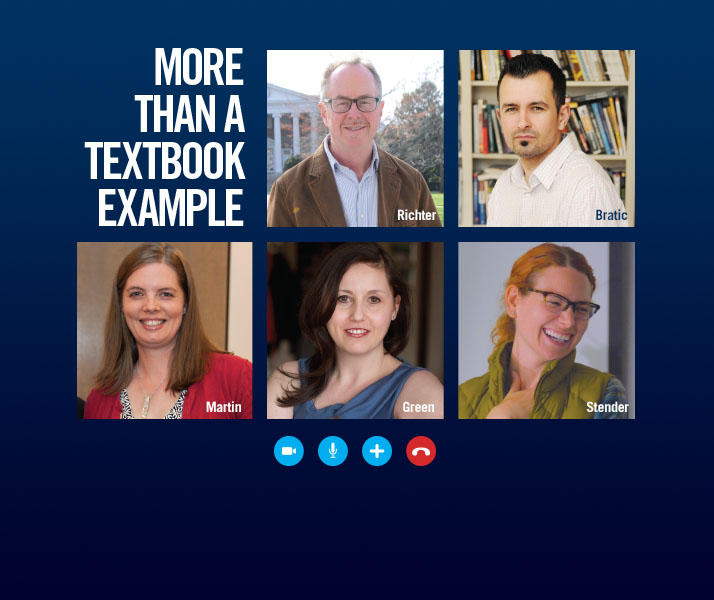
More Than a Textbook Example
The class Media Industries, Media Careers takes students beyond classroom theory, thanks to accomplished Hollins alumnae from the communications field.
By Jeff Hodges M.A.L.S. ’11
It’s a challenge many a college professor has faced when launching a new course, regardless of discipline: How do I make this class come alive for my students? Communication studies professors Chris Richter and Vlado Bratic shared this quandary when they teamed up to teach Media Industries, Media Careers, a 200-level special topic course introduced last fall. The professors envisioned the course as a comprehensive exploration of the accelerated changes in technology, creative processes, organizational structures, audiences, and more in the media.
What concerned Richter and Bratic wasn’t a lack of material to teach the course—there were plenty of up-to-date scholarly perspectives and case studies at their disposal. “We felt it was going to be a dry thing,” Bratic admitted, “a class that had a potential to be boring.”
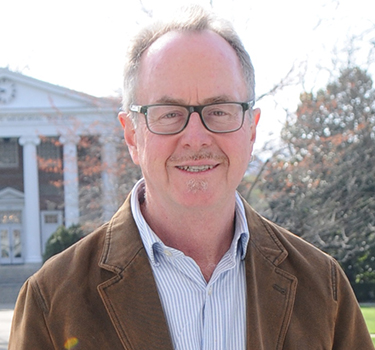
Richter Photo by Sharon Meador
But Richter got an idea after a department meeting during which he and his colleagues were discussing the careers of some of their alumnae. “I realized that we’ve got some people out there that are really doing well in the media industries. As soon as I had that thought, I went to Vlado and said, ‘Do you think we could do a course where we have guest lectures from some of these people who are doing remarkable things?’ And it evolved from there.”
The two professors set about structuring a course in which students would get “something from us, something from a text, and something from our speakers,” Richter explained. “Not all the same messages necessarily, but messages that complement each other. It would be a better learning experience.”
Richter and Bratic lined up seven accomplished alumnae from the field of communications to participate in the class. Living and working in such distant cities as New York, Boston, Washington, D.C., and Chattanooga were not obstacles; the alumnae were easily brought back to campus via Skype technology, which easily enabled each guest lecturer to employ a live video and audio stream from his personal computer to interact with the class.
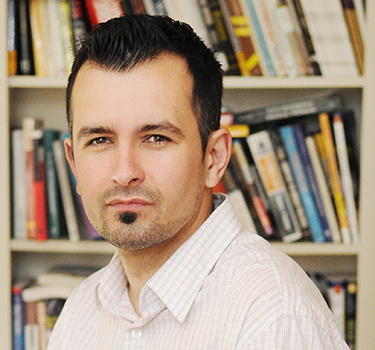
Bratic Photo by Olivia Body ’08
Richter said he and Bratic both agreed it was important that “our students had a certain level of knowledge or expertise about the industry before our alumnae started talking to them.”
“We spent the first eight weeks really going over the most current textbook we could find,” Bratic added. “We wanted to make sure we covered the bases, introduced proper terminology, and wrapped that all in a theoretical concept to help us understand the influence of media in society. The students took this very seriously.”
Richter recalled, “That approach let our alumnae address them at a higher level than they could have if they were walking them through the basics. Sometimes the alumnae would say things that weren’t quite what they were in the textbook. We reminded the students repeatedly that a textbook’s a textbook. It’s written by academics like us. They know a whole lot of theory, a lot about the industry, but they don’t know as much as someone who is in the industry.”
Jennifer Martin ’03, a master control operator at C-SPAN in Washington, D.C., “was so delighted to be able to speak with the class and give them a feel of my experience in the industry.” For Martin, it was a way to repay those who had helped her with advice and opportunities while she was a student. Interactions with “alumnae such as [former ABC News White House correspondent and member of the class of 1969] Ann Compton were so essential in me ending up on the career path I’m on now. It was great to give back to current students.”

Green Photo by Michael Falco
Guest lecturer Elizabeth “Missy” Green ’97, a New York-based media producer whose résumé boasts eight years working on The Montel Williams Show, agreed. “When I completed internships as a Hollins student, I discovered learning in the classroom is very different from the real world. Storytelling is a part of my career and it’s naturally part of my life, so I love sharing my life lessons with current students.”
Stephanie Stender ’03 sees mentoring as “incredibly important, and I take it very seriously.” A Boston-based producer for the PBS series America’s Test Kitchen, she noted, “I know how difficult it is as a female to get into the entertainment industry, which is incredibly male-dominated. We need to support women as they are entering the field, as it is a bit daunting, and if any of my experiences help current Hollins students, I am incredibly thankful.”
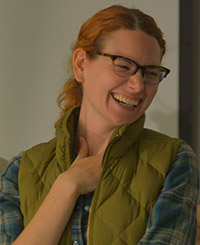
Stender Photo by Iryna’s Photography
Richter saw that theme emerge in many of the guest lectures. “On the one hand, in the media industry, don’t be afraid to remind the people where you’re working that women can do this. On the other hand, no job’s too small. When you get an entry-level position, don’t let them think, ‘All I can do is get coffee.’ Get them the coffee and say, ‘By the way, don’t think a woman can’t do this, too.’”
“The key message I wanted to convey was always ask for what you want,” said Stender. “You need to use your voice and let people know what your intentions and aspirations are. If you do not go confidently in the direction you would like to take, it is easy to get overlooked in this industry. You have to be your own advocate.”
Getting experience while an undergraduate and developing a comfort level with a rapidly evolving industry were also common threads. “Internships came up as a big push from alumnae,” said Bratic. “They even argued that some small [media] market internships would be more beneficial in terms of skill development because you have a chance to do more if you are in a small market where you can work in multiple capacities.”
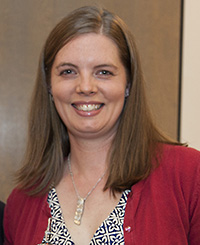
Martin
Martin emphasized adaptability. “I really wanted to convey the amount of change that I’ve seen in the time I’ve been working in TV since graduating from Hollins, including the whole transition to HD programming and digital equipment, and the amount of value in computer skills and literacy. It’s an incredibly dynamic industry that is changing quickly to adapt to new technology, and that’s information that’s really hard to convey via textbook.”
Richter and Bratic both feel positive about what the course achieved. “I think the students learned a lot and truly appreciated the alumnae talking to them,” Richter said, while Bratic is confident the students “appreciated the notion that they’ve gotten the theory and the importance of it. They got the firsthand experience of listening to the speakers, and they used a lot of good terminology in the course.
“It turned out to be a fairly dynamic class in which students were engaged, the content of the class was engaging, and the alumnae brought everything together quite nicely.”
“It’s so important to create ties with alumnae, and for alumnae to create relationships with students,” Green concluded. “No matter what the age difference, you will learn something if you have a conversation. I still spend time with the interns I hosted in 2014, and we always have something to talk about despite the difference in class years.
“I respond to every student who contacts me, even if I can’t help them. It’s amazing what a simple acknowledgement can do for a person, and you never know what the connection could yield.”
Special Guest Appearances
The following alumnae generously shared their time and expertise with the communication studies class last fall:
Jenni Austin ’08
Internet Content Producer
Fox 61, Chattanooga, TN
Emily Compton ’08
Producer/Documentarian
Tennessee Valley PBS
Melissa Eastlake ’07
Senior Manager, Digital Marketing
National Association of Broadcasters
Elizabeth “Missy” Green ’97
Jennifer Martin ’03
Stephanie Stender ’04
Alexandra Trower ’86
Executive Vice President, Global Communications
Estee Lauder, Inc.
